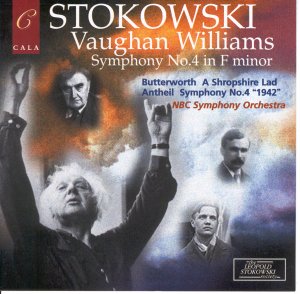This disc is significant not least because the original
acetates are the only aural record of Stokowski's performance of these
pieces.
In the Symphony Stokowski is by no means as manic as
some. Certainly the performance is flamingly impetuous in its accented
brass-barking. There is some slushy surface noise and residual clicks
but blessedly no sense of a gauzy curtain on the sound. The orchestra
play seraphically and the dazed moan of the strings has an almost human
quality suggesting the voice of a female choir. There is a slight wobble
in the sound at the start of the second movement and there are some
coughs. Stokowski could still wring the most extraordinary sound from
a string section - as at 2.40 in track 2. He makes the demons of the
scherzo cackle and leer and the brass rolls and rattles as never before.
We should not forget that the Sixth Symphony was given its premiere
recording by Stokowski in 1949 - six years after this NBC broadcast.
The Butterworth is rather painfully rendered. The original must have
had an off centre spindle hole. Rather a pity that current computer
technology is unable to apply the sticking plaster. The recording suffers
from bruised sound anyway and there is some coughing.
The Antheil displays anger and a frenzied tragedy which
is surely associated with Stalingrad and the Pacific conflict. The music
is riven with Shostakovich's protesting accents. Just listen to the
flute and side drum episode at 1.57 in the first movement. This shows
a straight influence from Shostakovich 7. This is far from untypical.
It seems that Antheil denied the influence but it cries out at you from
many a corner, page and paragraph. It is none the worse for it but it
is at least worth recognising.
This works well as an adjunct to the Sony recording
of Stokowski in RVW 6 and Mitropoulos in RVW 4. The liner notes are
in the safe hands of Edward Johnson. Cala are to be praised for their
candour in noting the technical imperfections of the original acetates.
Rob Barnett


